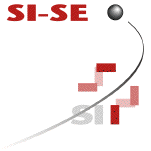


|
|
|
|
Tutorien
|
Tutorium I Selecting the "Right" Requirements Elicitation Techniques Requirements elicitation techniques help analysts determine the needs of customers early in the software development process, and thus when used effectively can increase the probability of developing systems that satisfy customers. While many requirements books have been written describing these techniques, little has been written about when these techniques should be used. Without this guidance, many analysts do not have the insight or expertise necessary to select a technique to effectively elicit their users' needs. Tutorial II Modeling in a Distributed Environment Global software development is increasingly common. Development organizations often result from merges and acquisitions of smaller companies. As software systems become more complex, capabilities from several geographically distributed groups are required. Differences in labor cost and widespread availability of skill enables the offshoring of specific functions, such as implementation or testing. Global software development, however, introduces many challenges that single site development approaches do not address. Reduced communication bandwidth and availability, cultural differences, lack of awareness of work at other sites, and lack of decision transparency are a few examples among many. Current software engineering artifacts and communication mechansims are insufficient for synchronous collaboration. Source code is not self documenting. Documents do not contain sufficient context for decisions and become obsolete quickly. As a result, extensive travel by participants is required, offsetting the advantages of distributed development.
Zeitplan der Tutorien Donnerstag 16. März 2006
|